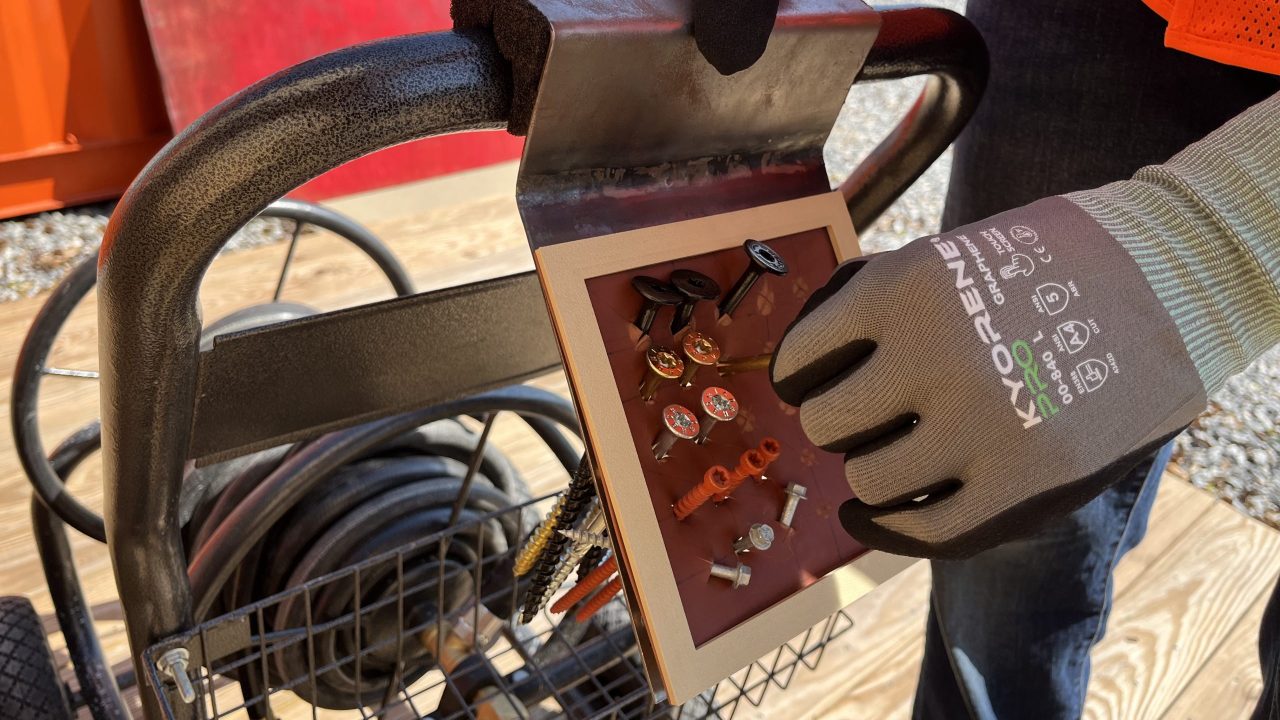Studio+Build Drives Collaborative Mass Timber Product Development

Students and faculty from the School of Industrial and Graphic Design (SIGD) and the McWhorter School of Building Science (BSCI) teamed up to create marketable product for mass timber installation.
Since the late 2000s, SIGD and BSCI have run a collaboration called Studio+Build to prototype new systems, technologies and methods for the construction industry.
“Studio+Build has a rich history dating back nearly twenty years, and has been an exceptional example of how collaboration in the CADC can have meaningful impact on the industry by way of potential improvements to construction productivity and safety,” said Paul Holley, a BSCI professor and the Director of the Center for Construction Innovation and Collaboration (CCIC).
“It has been a great way for Industrial Design students to immerse themselves in construction—the largest industry in the world—and for BSCI faculty and students to learn about the iterative design process,” he said.
The collaboration took a hiatus around the COVID-19 pandemic and while faculty pursued other research, but in Fall 2024, Holley and SIGD Associate Professor Rusty Lay revamped Studio+Build with a project centered on mass timber.
Students from Lay’s Industrial Design senior studio traveled to Atlanta to tour the construction site of Brookhaven City Hall, a cross-laminated timber (CLT) project by McCarthy Building Companies, Inc., and visited CLT manufacturer SmartLam in Dothan, Alabama.
“The design students involved with the Studio+Build project were able to not only learn from their design studio professor but also from construction educators, researchers and professionals,” Lay said. “Through this studio collaboration the students gained insight into how design can contribute to a broader scope of industries beyond consumer products.”
Each student developed a tool, product or system that would assist in mass timber construction, presenting 13 different prototypes in December. Two designs were carried forward into a research and testing phase.

Emily Norman ’25 designed an applicator nicknamed “Swift Seal,” that dispenses WetGuard, a self-adhesive membrane that protects timber elements from moisture. During the construction process, hardware and equipment damage applied Wetguard sheets requiring installers to patch and reinstall the membrane after each workday. Norman’s design functions as a packing tape dispenser, separating the membrane’s backing and applying small sections to the CLT through an efficient, easy-to-use tool.
Meanwhile, Spencer Quimby ’25 created the “Viper Bolt Carrier System,” a thermoplastic polyurethane hardware organizer that can be secured to the railing of a standard scissor lift. This negated the current installer system of packing various bolts in disposable plastic bags scattered around the jobsite.
In Spring 2025, BSCI thesis student Arjun Varadhan ‘25 took on the two prototypes forward for further refinement and industry application, under the supervision of BSCI Visiting Assistant Research Professor Jake Elbrecht.
Varadhan presented the prototypes to contractors with mass timber experience, demonstrating their use and discovering obstacles to market implementation, quickly identifying an industry need for the membrane applicator.
All three students have graduated, but Elbrecht praised the value of the Studio+Build process in creating new construction systems.
“There is feedback loop opportunity for this research to go back to industrial design,” Elbrecht said. “If we worked with a younger group of industrial design students, the prototypes could be further developed and potentially funded by the undergraduate research fellowship program.”
Looking forward, Elbrecht and Lay will continue mass timber tool research to facilitate better installation and disassembly using funds from an internal CCIC grant, and Studio+Build will tackle another design challenge in the fall, opening up the research to broader construction methods.
“I’m thrilled that we have new opportunities to leverage the collaboration again,” Holley said.
See more in:
Faculty Collaboration,
Research,
Student Experience
Related people:
Rusty Lay,
Jake Elbrecht,
Paul Holley